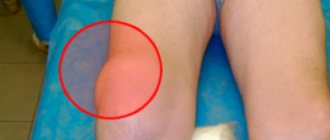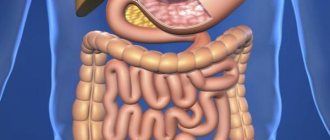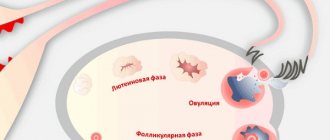Carpal - This word comes from the Greek Karpos, which means "wrist". The wrist is surrounded by bundles of fibrous tissue, which normally serves as a support for the joint. The limited space between these fibrous bands of fibrous tissue and the bony structures of the wrist is called the carpal tunnel. The median nerve, which passes through the wrist, provides sensation to the thumb, index and middle fingers. Any condition that causes swelling or changes in the position of tissue in the wrist can result in compression and irritation of the median nerve. Irritation of the median nerve in such cases leads to tingling and numbness in the thumb, index and middle fingers, a condition known as “carpal tunnel syndrome.”
Causes
Carpal tunnel syndrome develops when the size of the carpal tunnel decreases or the volume of tissue inside it increases. The main role in the development of compression-ischemic neuropathy is given to injuries at home, at work or during sports.
Reasons for such processes:
- sprains, dislocations and fractures of the wrist,
- pregnancy and associated swelling of soft tissues,
- long-term use of oral contraceptives,
- lactation period,
- diabetes,
- dysfunction of the thyroid gland or its removal,
- obesity,
- water balance disturbance,
- hormonal imbalance,
- acromegaly,
- renal failure,
- sudden weight loss,
- amyloidosis,
- rheumatoid arthritis,
- gout,
- hematological diseases,
- tumors deforming the wrist,
- hereditary predisposition.
In rare cases, neuropathy develops as a result of acute infectious diseases: typhus or typhoid fever, tuberculosis, syphilis, brucellosis, herpes. Carpal tunnel syndrome can be caused by vascular pathology. Spasm or thrombosis of a blood vessel leads to ischemia of the tissues supplied by it, swelling and compression of the nerve in the canal.
Factors contributing to the progression of pathology:
- intense sports,
- repeated monotonous activities,
- hypothermia,
- fever,
- long vibration,
- bad habits.
The canal, consisting of hard tissue, reliably protects the median nerve from exogenous factors. Constant loads on the same area lead to permanent deformation. In this case, the nerve fibers suffer and the trophism of soft tissues is disrupted. The tissues of the tunnel thicken, loosen and swell, there is no free space left in the canal, and the pressure on the nerve becomes maximum. At this time, the first clinical signs of the syndrome appear. The body tries to get rid of the disease on its own. Lymph accumulates in the joints of the hand and washes away inflamed cells. Significant stress on the hands leads to stagnation of lymph and increased inflammation. The joints begin to ache and swell.
Another cause of tunnel syndrome is swelling of the nerve fibers, caused by general intoxication of the body with toxic substances. Some medications used for a long time and in large doses can cause the development of pathology. These include antibiotics, diuretics, and vasodilators.
Categories of the population included in the risk group:
- persons who, due to the nature of their work activity, make the same type of hand movements;
- aged people;
- patients with endocrinopathies - dysfunction of the thyroid gland, pancreas or pituitary gland;
- patients with bone and joint diseases;
- people with incurable diseases - vasculitis, rheumatism, psoriasis and gout.
The pathology that develops against the background of a systemic disease leads to loss of elasticity of articular cartilage, their aging, and cracking. Over time, the affected cartilage dies, and the articular surfaces grow together. Such deformations completely disrupt the anatomical structure of the hand.
How to treat carpal tunnel syndrome at home
If discomfort in your wrist appears only from time to time, you can try to cope with it yourself.
Try to put less stress on your hand
Avoid activities that require you to actively bend and straighten your wrists. Keep track of what causes pain and avoid those activities. Or at least take frequent breaks to give your wrist a rest.
Working with a computer mouse, despite the lack of research, should also not be discounted: suddenly, in your case, it is this factor that “shoots”. Make sure your device is comfortable and you don't have to strain your hand to operate it.
Do exercises to strengthen your hand
For example, rotate your fist first in one direction, then in the other. Or clench your fingers tightly into a fist, and then unclench them just as vigorously. Perform the exercises 10-15 times at least twice a day.
Use a cold compress for pain
Apply a heating pad filled with cold water or an ice pack wrapped in a thin cloth to the affected wrist. This will help reduce swelling and pressure on the nerve.
Take an over-the-counter pain reliever
You can use paracetamol or ibuprofen tablets. At the same time, they will relieve swelling. Just keep in mind: if you have to take analgesics every day, then the situation is out of control.
Symptoms
The symptoms of tunnel syndrome increase as the nerve trunk is compressed.
- Clinical signs of the initial stage are unpleasant sensations and discomfort in the hand that occur after prolonged stress on this area of the body. Patients complain of trembling, itching and slight tingling in the limbs. At the initial stage, symptoms are temporary. When you shake your hands or change the position of your hands, the discomfort disappears.
- The narrowing of the canal is manifested by acute pain in the hand, which intensifies after exercise. The upper limb of patients becomes numb. Any movement of the hand in the wrist joint causes unbearable pain. Numbness, tingling and heaviness in the hands become unpleasant and irritating. Pain and paresthesia are localized in the area of the first three fingers of the hand. They occur at night or early in the morning. Numbness and decreased sensitivity of the limb deprives it of mobility.
- Significant narrowing of the tunnel is manifested by stiffness of the affected joint, hypotension and wasting of muscle fibers. At the same time, pain and numbness persist and intensify. Patients experience general symptoms: insomnia, irritability, depression. Cramps and constant pain unsettle me. A person can no longer lift a heavy object, dial a number on a cell phone, use a mouse on a computer, or drive a car. Fine motor skills are impaired and skin color changes. Patients experience weakness when flexing the hand, weakness in flexing the first and second fingers, especially the terminal phalanges. The sensitivity of the palmar surface of the first and second fingers is significantly reduced.
Pain syndrome is the main clinical sign of pathology. Patients complain of a burning or tingling sensation in the hands that occurs at night and disrupts sleep. Patients wake up to shake their arms. Blood flow to the fingers reduces pain. In advanced cases, pain appears not only at night. She torments patients around the clock, which affects their neuropsychic state and leads to impaired performance. Pain is often accompanied by a violation of autonomics and trophism, which is clinically manifested by swelling, hyperthermia and hyperemia of the wrist, palm and three first fingers.
Carpal tunnel syndrome is not life-threatening, but it does impair the quality of life. The intensity and duration of pain increases, insomnia and irritability occur, and diseases of the nervous system develop.
Treatment process
The goal of treatment for carpal tunnel syndrome is to eliminate or reduce compression of the median nerve. Specialists choose a treatment regimen depending on the clinical picture and severity of the pathology.
In mild cases, patients are treated conservatively with anti-inflammatory drugs while simultaneously fixing the affected hand with a special bandage - a splint. Splinting and wearing an orthosis helps keep the wrist joint in a neutral position. It must be worn during sleep and during the day when performing work activities. Doctors recommend that patients reduce motor activity of the affected limb, give up bad habits and follow a salt-free diet that reduces swelling until complete recovery.
Pharmacotherapy and physiotherapy
Patients are prescribed medications of the following groups:
- Corticosteroids are injected into the lesion, inside the joint - “Diprospan”, “Kenalog”,
- NSAIDs are taken orally after meals - Ibuprofen, Ketoprofen, Movalis,
- Vascular agents to improve blood supply to tissues - “Trental”, “Cavinton”, “Actovegin”,
- Diuretics that relieve edema - Spironolactone, Mannitol, Lasix,
- B vitamins – “Neuromultivit”, “Kombilipen”, “Milgamma”,
- Muscle relaxants – “Mydocalm”, “Sirdalud”.
In the initial stages of the disease, it is recommended to apply ice to the wrist for a couple of minutes or apply warm compresses.
Physiotherapy speeds up the healing process, alleviates the condition of patients, relieves pain and numbness. The most effective procedures are: UHF, amplipulse therapy, electrophoresis, phonophoresis, magnetic therapy, laser exposure. Exercise therapy, massage, manual therapy and reflexology are widely used.
Targeted conservative treatment in most cases leads to complete recovery and restoration of hand function.
Surgery
When conservative methods are unsuccessful, they move on to surgical intervention. The operation is indicated for recurrent processes or “long-standing” disease with symptoms of muscle atrophy and disruption of the conduction of nerve impulses.
During the operation, the carpal ligament, which forms the carpal tunnel, is cut. In severe cases, scars surrounding the nerve and tumors compressing it are excised. Surgery is performed in a classical way with open access or endoscopically. Currently, preference is given to the second method, since it is less traumatic, more gentle, and does not leave obvious scars. The ligament is excised through a mini-incision using video equipment and special instruments. The operation is performed within half an hour under local anesthesia on an outpatient basis. After the intervention, a cast is applied to the limb for 2 weeks to fix the joint and the patient is sent home.
Rehabilitation lasts approximately three months. During this time, the patient must follow all the doctor’s instructions, perform recommended limb exercises, and come for examinations. Patients are prohibited from manual labor and bending of the affected limb. These restrictions are necessary for the restoration of the median nerve and the hand as a whole. Only the attending physician will allow you to return to normal life.
Carpal syndrome is not considered a fatal disease. It significantly reduces ability to work and causes severe discomfort. If you start fighting the disease in time by removing compression, you can avoid the development of severe complications. Early diagnosis and adequate therapy will help stop further progression of the process and prevent surgery.
Diagnostics
The diagnosis and treatment of carpal tunnel syndrome is carried out by neurologists, as well as doctors of related specialties - orthopedic traumatologists, endocrinologists, and surgeons. Diagnosis of carpal tunnel syndrome consists of examining the patient and excluding other diseases with similar symptoms.
- Collecting anamnesis of the disease - the appearance and increase of clinical symptoms. The patient is asked in detail about the causes of the disease, past injuries, the nature of the pain, and the movements that provoke it.
- Examination - assessment of finger sensitivity and hand muscle strength using a wrist dynamometer.
- There are several functional tests that can detect damage in the nerve trunk. These include Tinnel's sign, cuff, and raised arms. These diagnostic procedures are performed differently, but mean the same thing. If the patient feels numbness and tingling after the test, then carpal tunnel syndrome occurs.
- Electroneuromyography allows you to accurately determine the location and extent of damage to nerve fibers, the level of damage to the nerve roots that form the wrist joint. Electrodes are inserted into the relaxed muscle of the diseased limb and its contractile activity is measured. The study data appears on the monitor in the form of a curve of different amplitudes. When the median nerve is compressed, conduction velocity slows down.
- MRI, radiography and ultrasound are auxiliary techniques that detect congenital anomalies of the hand, fractures and dislocations due to injuries and allow one to assess changes in the tissues of the musculoskeletal system.
Consequences and complications
Often, tunnel neuropathy becomes a chronic disease. Periods of remission, when it is asymptomatic, alternate with new exacerbations with pronounced symptoms.
The good news for people with carpal tunnel syndrome is that pathological changes in the area of inflammation do not spread to other areas of the body. The progression of neuropathy can lead to increased pain and disruption of nerve conduction only in the area of pinching.
If the course of this disease is allowed to progress and no treatment is applied, it can lead to a progressive increase in pain, local loss of sensitivity and impaired motor function.
Constantly being in a state of pain stress can provoke other nervous diseases.
Treatment
Treatment of carpal tunnel syndrome is aimed at preventing further entrapment of the median nerve. Patients are given anti-inflammatory and decongestant therapy to relieve pain and discomfort. Treatment of the underlying disease, manifested by carpal tunnel syndrome, is a mandatory condition, failure to comply with which can lead to frequent relapses and the development of complications.
When the first signs of pathology appear, it is necessary to fix the wrist. Patients are advised to apply cold to the lesion. If the cause of the pathology is work activity, it must be changed.
Drug treatment
To eliminate the symptoms of carpal tunnel syndrome, experts prescribe:
- NSAIDs – “Ibuklin”, “Diclofenac”, “Nimesil”,
- corticosteroid hormones - “Betamethasone”, “Prednisolone”, “Diprospan”,
- diuretics - Furosemide, Lasix, Hypothiazide,
- vasodilators - Cavinton, Piracetam, Vinpocetine,
- muscle relaxants – “Sirdalud”, “Mydocalm”,
- neurometabolites - B vitamins, Neostigmine, Nicotinic acid,
- injection of the anesthetic “Novocaine” into the place of compression,
- warming ointments and a fixing bandage on the wrist to relieve symptoms at night,
- compress of Dimexide, Lidocaine, Hydrocortisone and water,
- Methotrexate and other cytostatics are prescribed to suppress the activity of the immune system,
- chondroprotectors for joint restoration - “Rumalon”, “Alflutop”,
- thyroid hormones for hypothyroidism,
- diabetics are prescribed insulin or glucose-lowering drugs,
- for hypertension, ACE inhibitors or calcium antagonists are prescribed.
Physiotherapy
Physiotherapeutic procedures for carpal tunnel syndrome:
- electrophoresis,
- ultraphonophoresis,
- shock wave therapy,
- reflexology,
- transcranial electroanalgesia;
- UHF therapy,
- magnetotherapy,
- laser treatment,
- ozokerite,
- mud therapy,
- neuroelectric stimulation,
- physiotherapy.
Surgery
Surgery involves excision of the ligament compressing the median nerve.
- Endoscopic surgery is low-traumatic and leaves no scars. Through a small size, a video camera and a special device are inserted into the median canal to cut the ligaments. After surgery, a plaster splint is placed on the wrist.
- Open surgery involves making a large incision in the palm along the line of the median canal. The ligament is cut to relieve pressure on the median nerve. The recovery period after open surgery lasts much longer.
Patients are encouraged to move their fingers the day after surgery. After 1.5 months, physiotherapy and occupational therapy are prescribed. During the rehabilitation period, massage and gymnastics are indicated. Patients should rotate their hands, stretch their palms and fingers. If necessary, you can take a pain reliever.
Video: surgery for carpal tunnel syndrome
Exercises used for exacerbation of carpal tunnel syndrome:
- Clenching your fingers into a fist.
- Rotate your fists to the sides.
- Clenching palms, spreading elbows.
- Pressure of one hand on the other.
- Squeezing a rubber ball.
Video: exercises to prevent carpal tunnel syndrome
After normalization of the general condition of patients with tunnel syndrome, they are indicated for sanatorium-resort treatment in the Crimea, Krasnodar and Stavropol Territories.
ethnoscience
Treatment of carpal tunnel syndrome at home includes not only general and local drug therapy, but also the use of traditional medicine. The most effective and common folk recipes:
- Cucumber tincture relieves numbness in the fingers and normalizes blood circulation. It is used to rub sore fingers.
- Hands hover in a heated mixture of sea buckthorn berries and water.
- Sore wrists are rubbed with ammonia and salt.
- Pepper rubbing can help cure carpal tunnel syndrome.
- Lingonberry decoction is taken orally.
- An infusion of parsley root or white birch leaves has an anti-edematous effect.
- Bearberry increases diuresis and relieves inflammation.
- Mumiyo is rubbed into the skin over the lesion daily for several minutes.
- Mustard, sage, and turpentine baths irritate free nerve endings.
What to do if your brushes “fall off” and you need to work
How often do unbearable “tunnel” pain and unfinished work torment you at the same time?
What to do? Even if you have mild symptoms, it is important to stop the activity that caused the discomfort. Switch to simple household chores that allow you to relieve tension in the channel:
- wash the dishes - warm water has a relaxing and calming effect;
- do wet cleaning of the floor - always with your hands and warm water;
- Wash the window sills - again with warm water.
Use a wrist bandage or splint. A bandage for trap syndrome will help keep the wrist at rest (without tilting or arching). Pharmacies (specialty stores) sell models of varying degrees of fixation, size, and color. Since the carpal tunnel retains its maximum volume in this position, the nerve is provided with sufficient space.
The clamps are practical: they are easy to put on and take off, do not restrict the wearer’s movements, and you can work in them. If wearing the retainer during the day is uncomfortable for some reason, wear it at night
Please note that the retainer must contain a rigid or springy element and be made of durable and breathable fabric
At home, the pain will decrease if:
- Make a compress from ice cubes, first wrapping them in several layers of bandage. The effect will be enhanced if you first rub a few drops of cypress oil (eucalyptus, mint) into the painful area in a circular motion. This method will bring relief if the syndrome is mild.
- Place the affected limb on the elbow with the fist pointing upward. Hold your hand in this position for 1.5-2 minutes. Did you feel relieved? Squeeze and unclench the rubber ball for another 1-1.5 minutes (this will diversify the work of the muscles of the limb).
A trip to the pool will bring you back to feeling great. The main condition for therapeutic swimming is that the water must be warm and cover the limb up to the shoulder. Experts also advise mastering yoga. Classes help develop joints and muscle elasticity, and promote psycho-emotional stability.
Prevention
The following rules will help prevent the development of carpal tunnel syndrome:
- careful attention to your health,
- maintaining a healthy lifestyle,
- sufficient physical activity - gymnastics, swimming, walking, yoga,
- comfortable sleeping and convenient work place,
- periodic changes in body position,
- systematic thermal procedures - baths, saunas,
- balanced diet,
- prevention and timely treatment of various ailments,
- See a doctor when the first signs of pathology appear.
Treatment of carpal tunnel syndrome is aimed at eliminating pain and discomfort, but most importantly, at eliminating the cause of the pathology. It is necessary to treat tunnel syndrome comprehensively in order to permanently get rid of the pathology and prevent relapses. This disease significantly reduces the quality of life of patients. But the prognosis of the pathology is currently considered favorable. Diseases of the peripheral nervous system are so diverse that it is not always possible to determine their cause and make an accurate diagnosis. Only highly professional specialists should do this. In recent years, the number of patients with carpal tunnel syndrome has increased, which is due to the strong introduction of computer technology into the life of a modern person.
Prevalence of the disease
Carpal tunnel syndrome (TS) is very common - over 160,000 cases have been reported worldwide for every 100 thousand population. In women, TS is slightly more common than in men. With age, the risk of developing TS increases significantly. However, in old age (after 60 years) this disease is rare, especially if it has not been diagnosed previously.
Carpal tunnel syndrome occurs most often with inflammation and swelling of the ulnar nerve, which is located in a narrow canal.
Sometimes this syndrome develops when the brachial plexus, radial, peroneal and tibial nerves are damaged.
Compression of the nerves provokes severe pain, decreased muscle strength and other symptoms.
It has been proven that on average, TS occurs in every 6th person who works at a computer.










